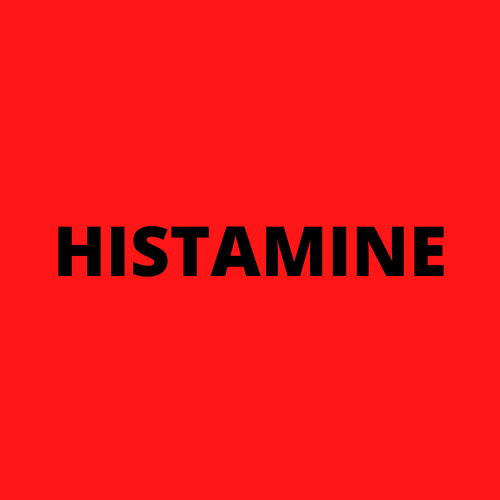
SOYA ALLERGY
Key Allergens
There are 7 food allergens associated with an allergy to soyabeans. There is one airway allergen called a defensin, found in pollen from the soya plant.
The proteins include a 2S seed storage proteins, a 7S seed storage protein (also known as vicilin) and an 11S seed storage proteins. These proteins are most commonly found in nuts, seed and legumes.
Soya bean also contain a profilin proteins. These proteins are panallergens which can cause allergies across mutiple groups of foods.
The last food allergen is a Bet v 1- like protein, these cause oral allergy types symptoms and can cause cross reactivity over multiple groups of foods.
Cross reactivity is usually caused by the proteins in one food being similarly shaped to those in another food. Unusually there is cross reactivity between the seed storage proteins in soya beans and the casein in cows milk. This is called non-homologous cross reactivity. This is a common anecdote, that babies allergic to cows milk (CMPA - cow milk protein allergy) can often not tolerate soya milk either and this would be the reason.
Food Intolerances




Processed soya products and soy sauces are high in sulphites. Fresh edamame beans are much lower. Sulphites are inorganic salts used in preservations and have the potential to cause symptoms of food intolerance to those sensitive to sulphites, this food intolerance is more common in asthmatics. An improvement in symptoms can be made with a change to a low sulphite diet.
Soya is a food high in histamine, so is not suitable for people following a low histamine diet. Fresh soya beans however are low in histamine.
Soya and soya milk is a high FODMAP food. FODMAP stands for Fermentable oligosaccharides, disaccharides, monosaccharides and polyols. Foods high in FODMAPs can cause symptoms of food intolerance, affecting the gastro intestinal system and this can be mistaken for a true IgE food allergy.
Soya is a food low in salicylates. These have the potential to cause gastrointestinal food intolerance symptoms in people who are sensitive to salicylates.
Soya contains a high amount of lectins, in soya this is called agglutinin. Usually cooking foods with lectins makes them more digestible and can reduce the symptoms of food intolerance, soya lectins however are heat stable, so their effect is not reduced by cooking.
You can read more about Food Intolerances on the dedicated Food Intolerance Page.
Associated Syndromes
Allergy to soyabeans is sometimes linked to Celery-Mugwort-Spice Syndrome as the sensitising allergen is a profilin protein called Art v 4, these proteins are also sometimes also called Bet v 2 proteins.
There is also a link between soya and Latex Food Syndrome. The plant involved in latex allergy Hevea brasiliensis, the rubber tree plant, has an allergen called Hev b 8 which is a profilin protein. Those very sensitised to latex may have a contact allergic reaction from other foods or plants containing profilin proteins, there is less evidence of this than sensitisation to other latex linked proteins like hevein and chitinases.
Cross Reactivity
There is a lot of cross reactivity between 2S and 11S seed storage proteins, the only other food containing 11S proteins not mentioned above is pumpkin.
Other foods containing vicilin like (7S seed storage) proteins not mentioned in the list above are lupin, lentils, macadamia nuts, peas and mung bean.
Other foods containing profilin allergens are celery, peanut, lychee, walnut, lupin, almonds, mustard, hazelnut, kiwi, pineapple, chilli, melon, orange, strawberry, apple, banana, aubergine (eggplant), peach, pear, tomato, dates, cherry, carrot, barley and wheat. Allergic reactions to some of these foods may be considered a marker of profilin hypersensitivity.
Food linked to Pollen Food Allergy Syndrome, those containing Bet v 1 like proteins include peanut, celery, walnut, mung beans, tomato, raspberry, pear, peach, cherry, apricot, apple, strawberry, carrot and kiwi.
Defensin proteins are found as food allergens in peanut, celery and chestnuts and as a pollen allergen in wormwoods, mugworts, ragweed and sagebrush plants.
You can download a Soya Allergy Factsheet from the Allergy Resources Ko-fi Shop for just $0.90 (£0.69 or €0.82). This has up to date information on which foods contain linked allergens and what foods to avoid if you think you have an allergy to soya.
Note that these food lists are not exhaustive, the most up to date information is on the Cross Reactivity Tool.
Resources
Websites
Allergen Encyclopedia - Soybean
Anaphylaxis Campaign - Soya Allergy
Allergy information for: Soybean, Soya (Glycine max)
ATP Science - Salicylate Food List
Articles and Journals
Occupational Asthma and Rhinoconjunctivitis due to Soybean in a Bakery Worker, 2024
A Population Investigation of Allergy Prevalence and Cross-sensitization in China, 2024
Occupational asthma and food allergy due to soybean in a bakery worker, 2024
Cross-reactive epitopes and their role in food allergy, 2023
Peanut, soy and emerging legume allergy in Canada, 2022
Cross-reactivities of non-homologous allergens, 2019
Gly m 2S albumin is a major allergen with a high diagnostic value in soybean-allergic children, 2013
Soy Protein Allergy: Incidence and Relative Severity, 2004
Characterization of a stress-induced, developmentally regulated gene family from soybean, 1992
Identification of soybean proteins responsible for respiratory allergies, 1991